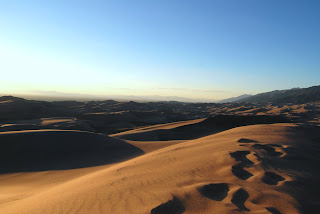You enter the woods with your pack heavy with gear and about two miles in, just when the pack straps have pulled your shoulders to the ground, you spot ahead of you what looks like a deflated tent hung up in a tree, as red and as out of place here as a fast food sign. It’s not a tent though, it’s the fuselage of a plane. Or part of one. Less than two hundred feet up the steep side of the mountain you’re on, through ponderosa pine, and ghostly aspen, lay the rest of the aircraft – scattered, shattered. The trees around it are sheered off at their torsos, some still hanging on to hunks of long-dead wood. Your pack sitting beside the trail, you take your time up the hill – who knows what could be lying around? – checking off the parts of the plane. There’s a landing gear, the rubber of its tire faded and brittle. There’s a propeller, looking unearthly as it rises out of the dense ground cover, wet from the rains of the monsoon season. There’s the giant wrecked heart of the engine. Curled and warped sheet metal, broken glass, hunks of random plastic. A tray. A mug, the ring where you’d put your finger unbroken, still whole.
As spectacular a sight as this is, it’s nothing to this mountain. Nothing at all. Your jaw drops, and the mountain snores. It doesn’t even snore. It rumbles and shifts silently, imperceptibly. It is indifferent to you and this plane. Less than indifferent, but not, you think, unconscious. From the moment you set foot in the woods you have been humbled, by the silence you could never achieve on your own, by the richness and singular purpose of the life all around you, by the weight of your pack whispering, convincingly, to stop for a moment, rest. And now your humility attains a deeper sense of itself as you comb through the pieces of the plane, make your way back down the steep hill, re-shoulder your pack, and continue.

















































